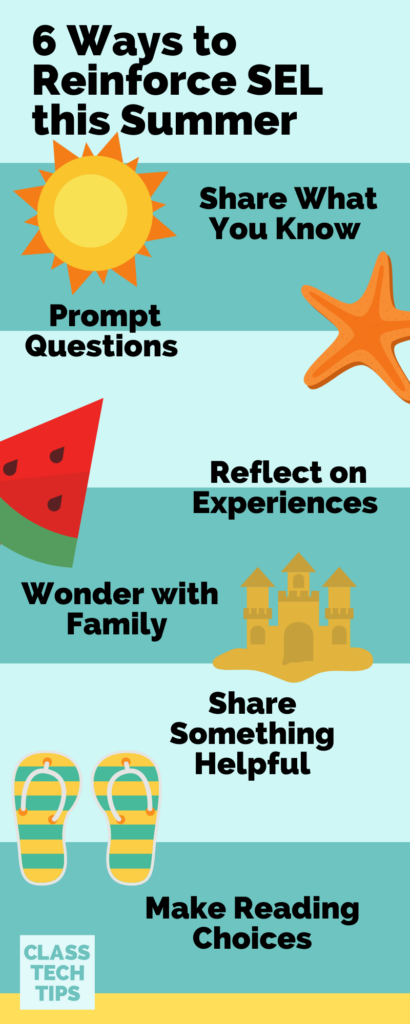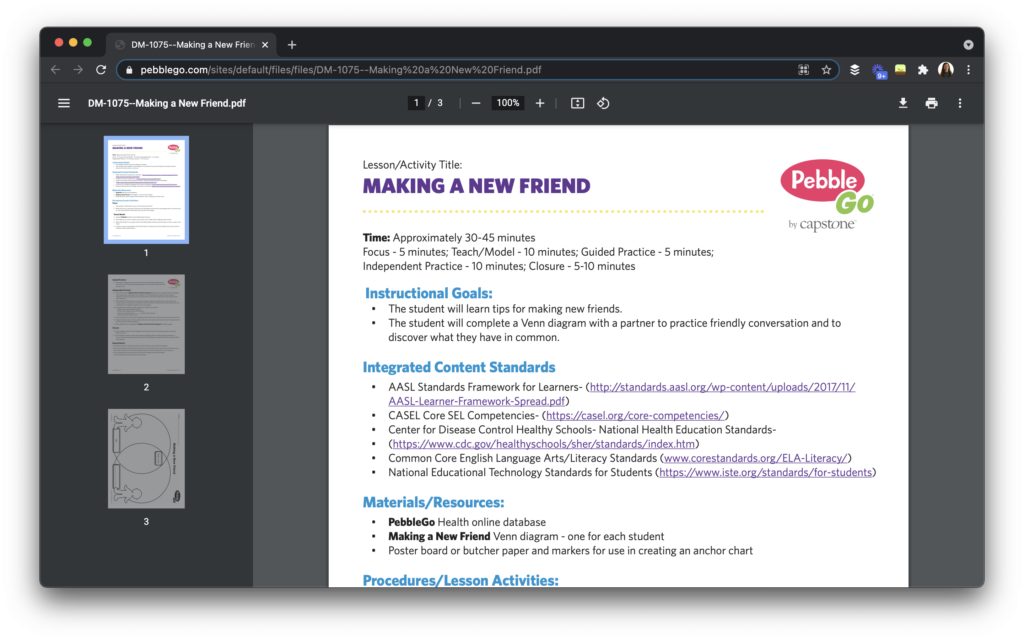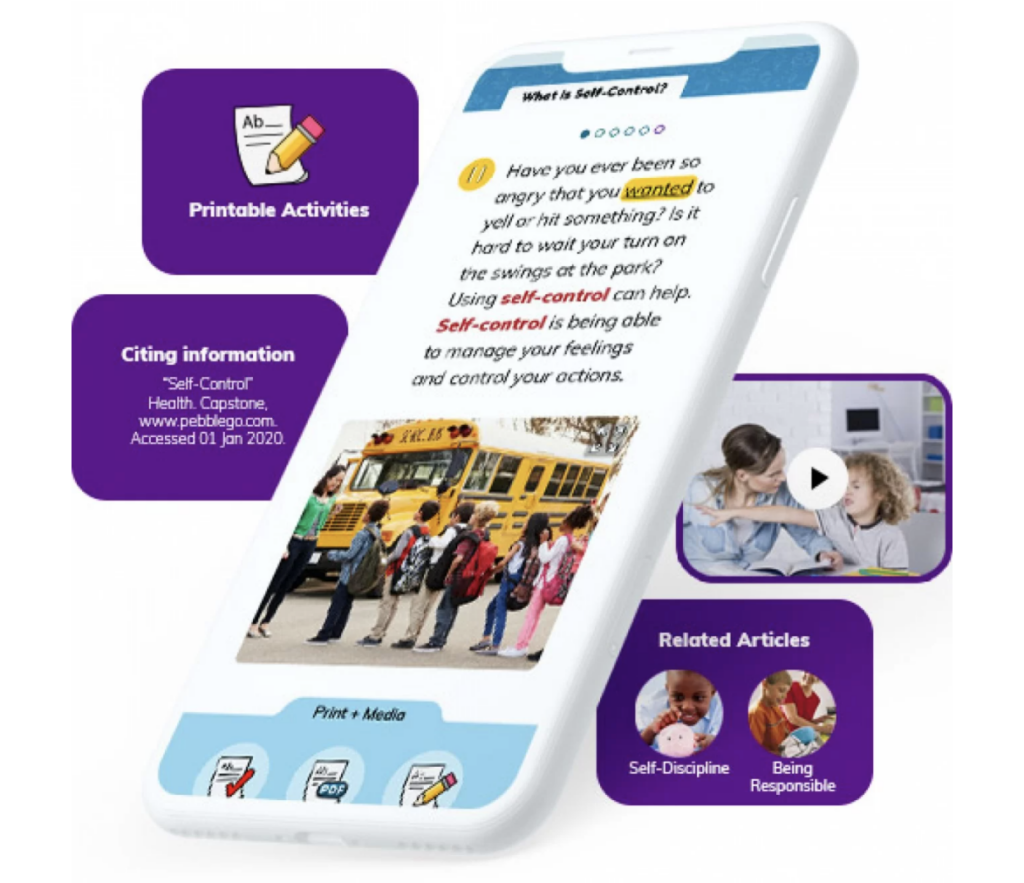Social-Emotional Learning (SEL) is essential during the school year, but the learning and engagement don’t need to stop during the summer months. If you listen to my Easy EdTech Podcast, you might remember the conversation I had with Krista Leh earlier this year all about social-emotional learning. It’s a topic I’ve featured a few times on the blog, too. Today I’m excited to share a few tips and resources related to this topic again — how to reinforce SEL this summer.
There are lots of reasons I love PebbleGo and the outstanding collection of resources from Capstone Connect. You might have caught this blog post from earlier this year featuring their diverse set of resources. PebbleGo Health includes a wide range of topics to help build positive social-emotional skills. These resources support the Collaborative for Academic, Social, and Emotional Learning (CASEL) framework. Every SEL-related article in PebbleGo has activities to support in-class, remote, or summer learning.

In today’s blog post, I’ll share six ways to reinforce SEL with K-3 students this summer, featuring the excellent resources from PebbleGo.
6 Ways to Reinforce SEL
PebbleGo is the perfect space for having your youngest students explore and engage in foundational SEL concepts. There are lots of resources for both readers and pre-readers alike. When it comes to social-emotional learning, their special Health collection is full of fantastic options. As you prepare for the summer months and share resources with your students, here are six ways to reinforce SEL.
Share What You Know
Inside of PebbleGo, there are ready-to-use activities for students around the different reading selections. Every SEL-related article has three activities to support in-class, remote, or summer learning. This includes a “Share What You Know” activity. This a great way to kick off a lesson so students can build their confidence by talking about their prior knowledge. Students might jot down all of the things they know about a topic on sticky notes in a summer school setting. Then they can post the sticky notes in a classroom space where everyone can see.
Prompt Questions
Give students a chance to ask questions as they read by providing discussion prompts. This activity can happen throughout a group or independent reading experience. During this activity you might include questions that allow students to share connections to past readings or favorite topics to learn about. If students are exploring texts at home with their families, you might want to share a list of questions families can use with any reading activity. For example, you might share questions for families to use around vocabulary, like:
- What do you think this word means?
- Where have we seen this word before?
- Is there another word that means the same thing?

Reflect on Experiences
In a summer school setting, carve out time to give students a moment to pause at the end of a reading activity. They can then share how they felt about that reading experience. This reflection might include sharing something that felt challenging or easy or talking about something they want to share with a family member about a new topic. If you use emojis with your students, you might have them choose an emoji that connects to how they feel about the topic.
Wonder with Family
Provide time for children to list their wonderings before, during, and after a reading experience. You might provide a list of wondering prompts to families to help them lead a conversation with their child over the summer. These questions could include:

- What do you think we will learn as we read?
- Is there anything you’re still curious about?
- What questions do you still have?
Share Something Helpful
After students read about one of the SEL-friendly articles in PebbleGo Health, they can share a helpful tip they learned. This activity can help them think about supporting others by sharing a tip. It could also take the form of a piece of advice based on what they’ve read. Students might decide to draw a picture of a healthy eating tip in Seesaw after reading the article on “Vegetables.” Or they can record their voice in Flipgrid with a suggestion for making good decisions after reading the “Peer Pressure” article. Here is a full list of article topics.
Make Reading Choices
For the last way, or number 6 on the list, give students a chance to make reading choices. Whether students are diving into these high-quality, high-interest resources in a summer school setting or at home with their families, they can make choices as readers. Encourage students to pick a topic to read about by choosing a few article topics and letting them pick the final one. Making reading choices empowers students and helps them take ownership of their reading experiences.
PebbleGo Health and SEL this Summer
Within PebbleGo Health, you’ll find many topics that support social-emotional learning this summer (and throughout the school year). Each article has activities you can use with your students in a summer school setting and activities families can use to support their young readers at home.
What will you find? In PebbleGo Health, every SEL-related article has three activities: Share What You Know, Activity (a sort of mini-project), Questions for Understanding. You’ll also find several more robust, interactive lesson plans aligned to state and national standards. Teachers and families can adapt these lessons for any setting this summer!
Learn more about the SEL-friendly resources from PebbleGo Health on this special landing page.







